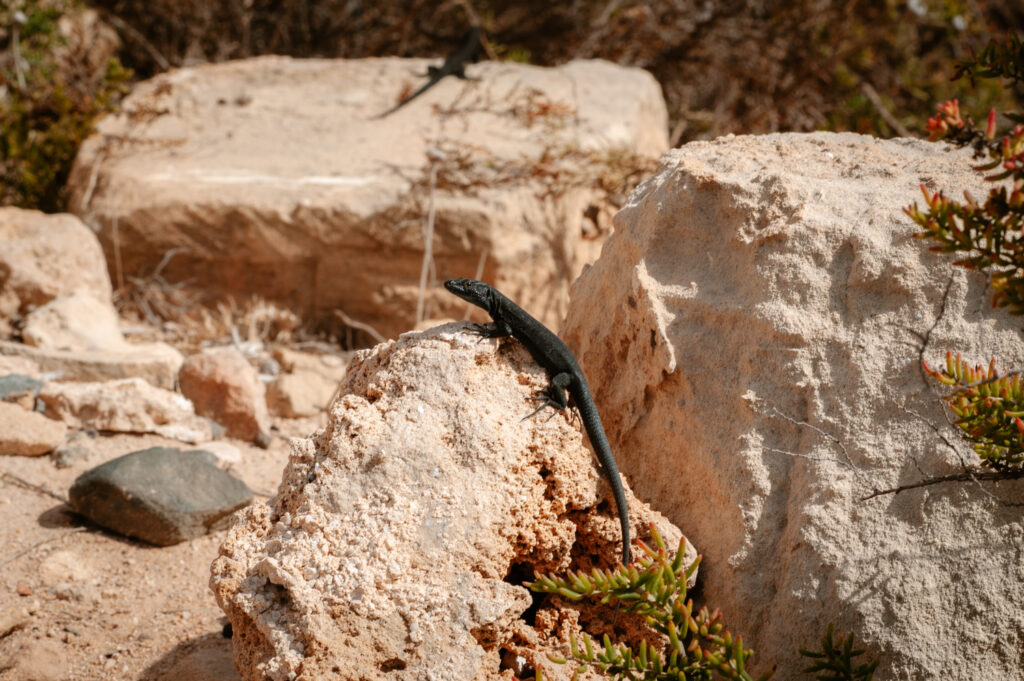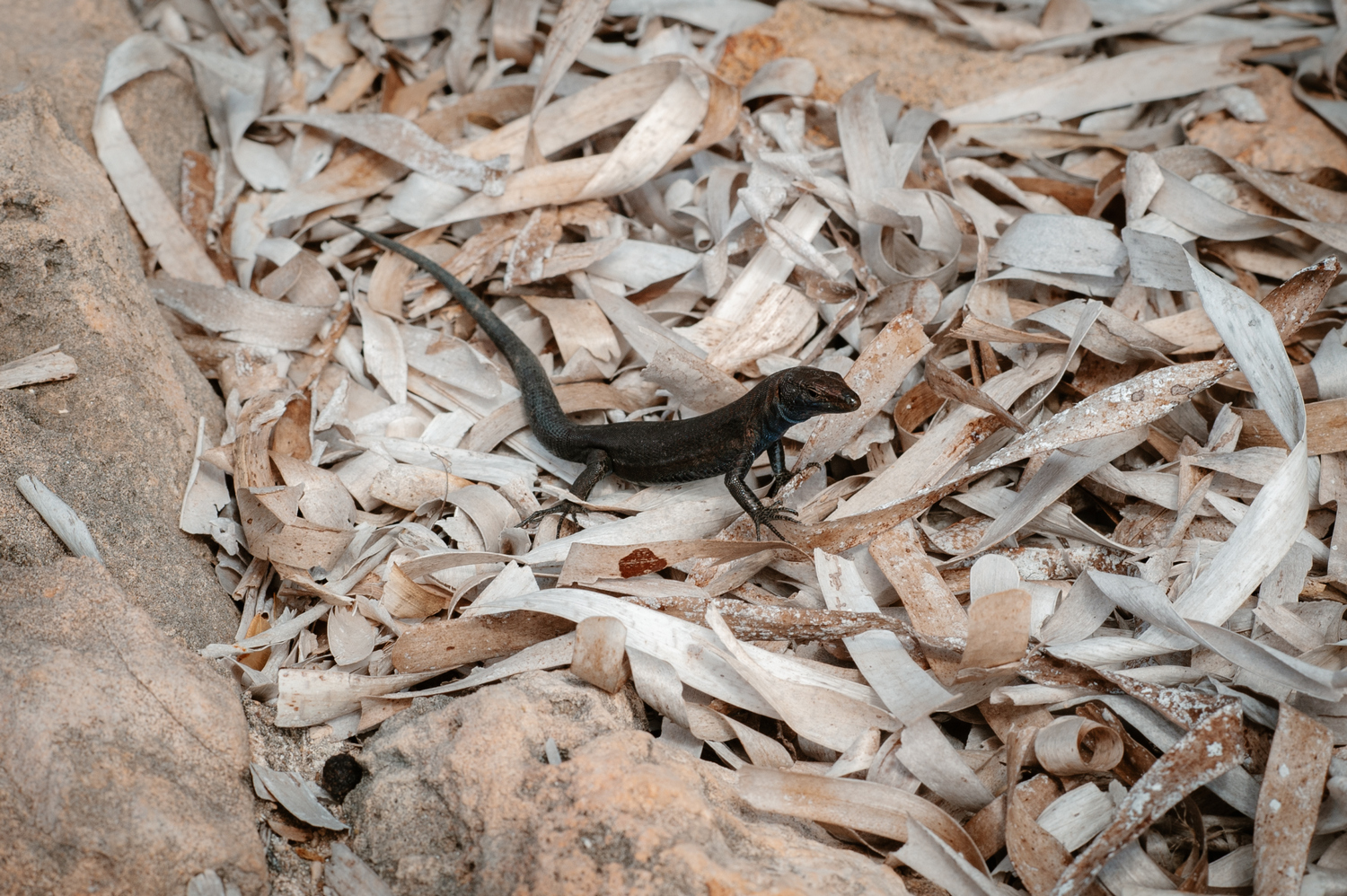This endemic reptile, known by the scientific name of ‘Podarcis lilfordi’, is one of the symbols of Menorca. Currently it only survives on several islets, but its ‘personality’ is projected much further.
It can be seen on many T-shirts, drawn on personalized abarcas, on key chains and kitchen magnets… Its sinuous silhouette shapes decorative figurines, bracelets and hangers, it is found on earrings and all kinds of handicraft objects. Decorate thimbles, cups or lighters. There is no doubt, in the XXI century, the lizard is one of the symbols of Menorca.
But who is this reptile so popular on the Mediterranean island? Why is so important? Where does it live? How did it get there?
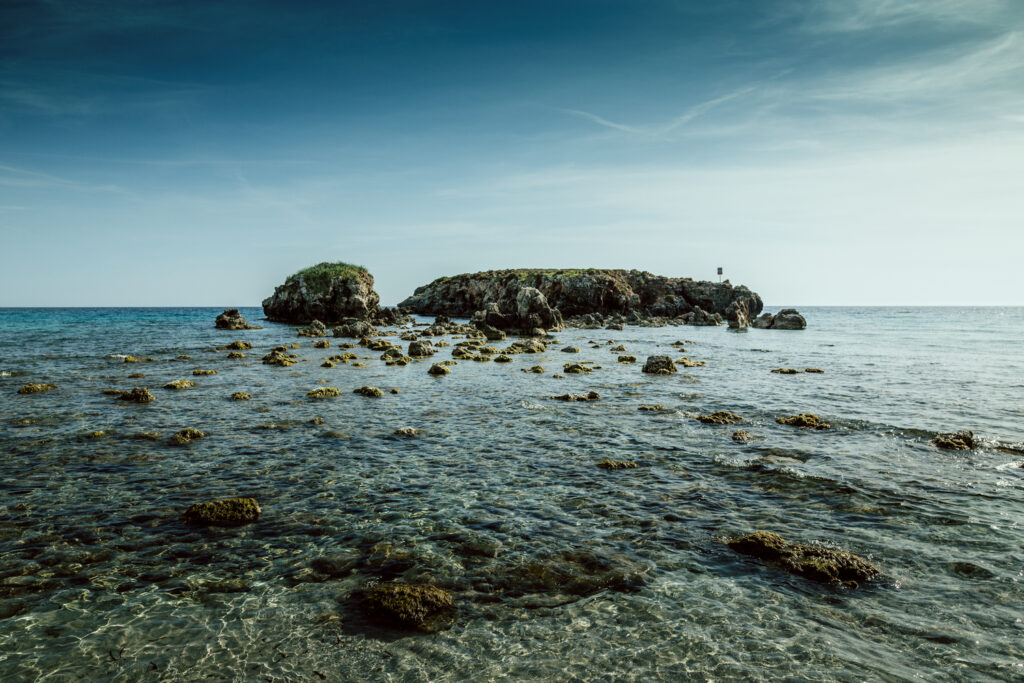
Twelve endemic subspecies
When we talk about the famous lizard of Menorca, we are actually referring to the Balearic lizard, whose scientific name is Podarcis lilfordi. It is an endemic species of the Balearic Islands, found on the islets that surround Menorca, Mallorca and Cabrera.
On the other hand, no community is found on the main island of Menorca. In total, they have been identified in up to eighteen small islands and islets of the Menorcan perimeter, where up to twelve different subspecies are observed. The highest concentrations occur in the Illa de l’Aire, in the Menorca’s southeast, and in the Illa d’en Colom, to the east. Although there are specimens from the south, as in Escull de Binicodrell; to the north, as in Illes d’Addaia or Port de Fornells; passing through Illot d’en Mel, in the middle of the Albufera des Grau lagoon, among others.
All of them are absolutely protected and some are at risk of extinction. Needless to say, their existence is fragile, given the small dimensions of their habitats and the uncontrolled human pressure experienced by some of these habitats.
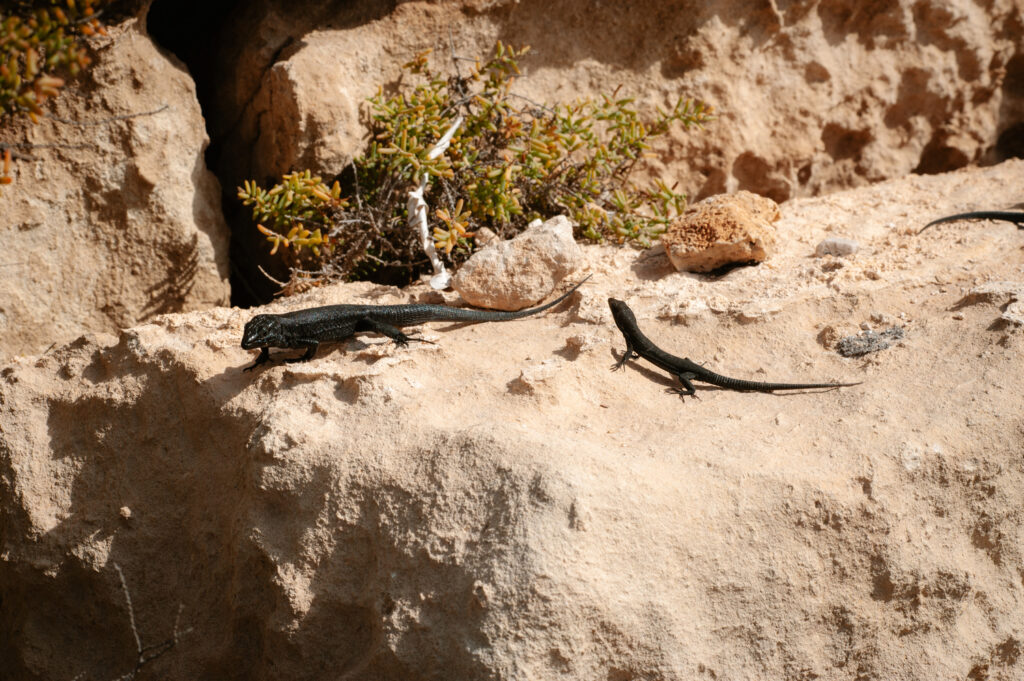
They came walking
How is it that each of the lizard subspecies is found almost exclusively on their respective islets? Its journey begins millions of years ago, when the level of the Mediterranean dropped about 1,500 meters and caused the Balearic Islands to join the continent. This fact caused many animal species – among them the ancestors of the lizards – made their way on foot to their new habitats.
When five million years ago the water definitively separated the Gymnesian Islands (Mallorca and Menorca) from the mainland and the Pityuses (Ibiza and Formentera), those ancient reptiles evolved in isolation. This is how the species known as Balearic lizard was born.
Throughout the ages, the islets have been connecting and disconnecting from the main island depending on the sea level, until reaching their final configuration between 6,000 and 2,000 years ago. This even more reduced isolation is the reason given by experts to explain the particular evolution of each subspecies.
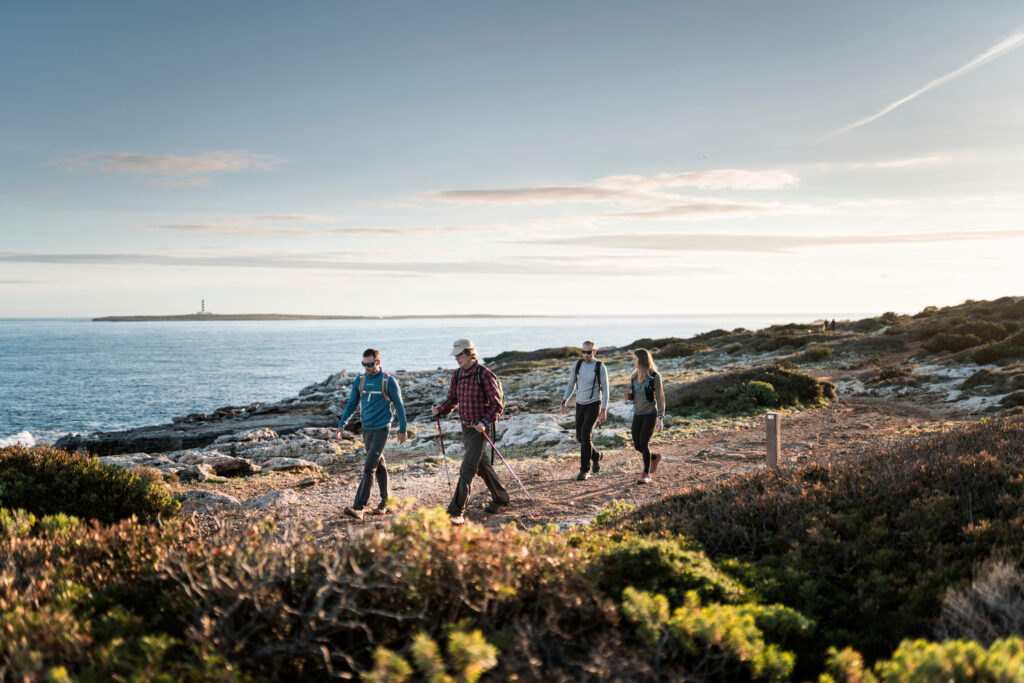
The black lizard
Of all these subspecies, the number one in the popularity ranking is held by the black lizard of Illa de l’Aire. Identified as early as the 19th century, it responds to the name of Podarcis lilfordi lilfordi. It has relatively large dimensions (up to 22 centimeters) and a dark coloration, which turns into bright blue in the belly area.
It is the most numerous variant of all, as well as the most differentiated of the various subspecies of the Menorquin islets. The fact that Illa de l’Aire was the first of the islets to be definitively separated from Menorca, some 9,000 years ago, could be the key to this unique evolution.
